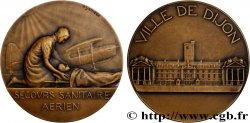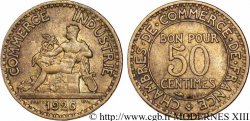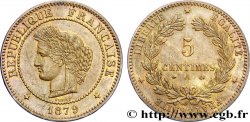fme_446968 - III REPUBLIC Médaille de l’exposition de Courbevoie
Quantity
Add to your cart

Type : Médaille de l’exposition de Courbevoie
Date: n.d.
Mint name / Town : 92 - Courbevoie
Metal : silver plated bronze
Diameter : 45,4 mm
Orientation dies : 12 h.
Engraver COCHET Robert (1903-1988)
Weight : 57,9 g.
Edge : lisse + Corne BRONZE
Puncheon : corne BRONZE
Coments on the condition:
Très belle médaille avec une argenture du plus bel aspect
Obverse
Obverse legend : ANÉPIGRAPHE.
Obverse description : Figure féminine tournée à gauche, cueillant des fruits sur l‘arbre.
Reverse
Reverse legend : 1ÈRE FOIRE / EXPOSITION / DE / COURBEVOIE.
Reverse description : Légende en 3 lignes dans un médaillon au centre d’une couronne végétale dans un cadran rayonnant.
Commentary
Intéressante médaille de style Art Déco. Ce type à la cueilleuse de fruits se décline en divers diamètres et en divers métaux.
Robert Cochet (1903 - 1988) était un graveur de médailles ; il a étudié à l'École nationale supérieure des beaux-arts de Paris et s'est spécialisé dans la création de dessins pour des médailles, des pièces de monnaie et de petites œuvres en bronze.
Cochet a conçu plusieurs pièces de monnaie, y compris la pièce de 100 francs de la Quatrième République, frappée en France à la Monnaie de Paris et Beaumont-le-Roger entre 1954 et 1958. Elles sont signées avec un petit monogramme CR sur le devant et R Cochet sur l'envers. Il a également conçu des camées pour les poids de papier sulfure fabriqués par les fabricants de verres français Compagnie des Cristalleries de Baccarat. Les sujets incluent le président américain Harry S. Truman. Sa plus grande contribution aux arts a été la création de nombreuses médailles commémoratives et décernées en bronze par la Monnaie de Paris , y compris la médaille française «Défense passive 1939-1945».
Cochet a reçu un diplôme et une médaille lors de l'Exposition internationale de 1954 à Madrid. Il a été nommé Sociétaire du Salon des Artistes Francais et des exemples de ses médailles se trouvent dans la collection du British Museum, du Chrysler Museum of Art et du Harvard Art Museum..
Robert Cochet (1903 - 1988) était un graveur de médailles ; il a étudié à l'École nationale supérieure des beaux-arts de Paris et s'est spécialisé dans la création de dessins pour des médailles, des pièces de monnaie et de petites œuvres en bronze.
Cochet a conçu plusieurs pièces de monnaie, y compris la pièce de 100 francs de la Quatrième République, frappée en France à la Monnaie de Paris et Beaumont-le-Roger entre 1954 et 1958. Elles sont signées avec un petit monogramme CR sur le devant et R Cochet sur l'envers. Il a également conçu des camées pour les poids de papier sulfure fabriqués par les fabricants de verres français Compagnie des Cristalleries de Baccarat. Les sujets incluent le président américain Harry S. Truman. Sa plus grande contribution aux arts a été la création de nombreuses médailles commémoratives et décernées en bronze par la Monnaie de Paris , y compris la médaille française «Défense passive 1939-1945».
Cochet a reçu un diplôme et une médaille lors de l'Exposition internationale de 1954 à Madrid. Il a été nommé Sociétaire du Salon des Artistes Francais et des exemples de ses médailles se trouvent dans la collection du British Museum, du Chrysler Museum of Art et du Harvard Art Museum..








 Report a mistake
Report a mistake Print the page
Print the page Share my selection
Share my selection Ask a question
Ask a question Consign / sell
Consign / sell
 Full data
Full data



